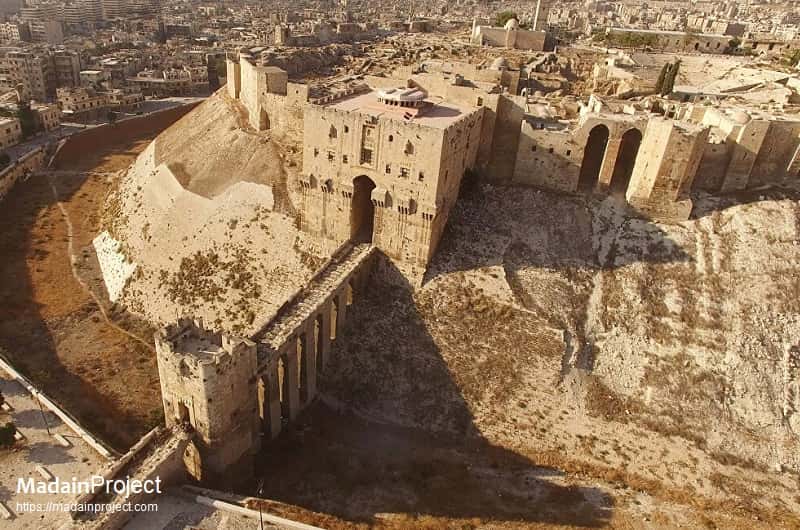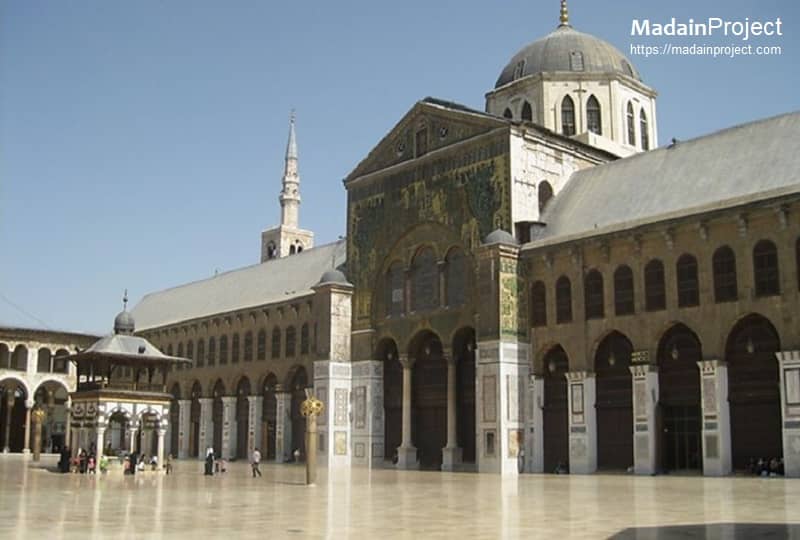Ancient Syria is one of the oldest inhabited regions in the world with archaeological finds dating the first human habitation at circa 700,000 years ago. The Dederiyeh Cave near Aleppo has produced a number of significant finds, such as bones, placing Neanderthal habitation in the region at that time and shows continual occupation of the site over a substantial period. The region was known as Eber Nari ('across the river') by the Mesopotamians and included modern-day Syria, Lebanon, and Israel (collectively known as The Levant). Eber Nari is referenced in the biblical books of Ezra and Nehemiah as well as in reports by the scribes of Assyrian and Persian kings. The modern name of Syria is claimed by some scholars to have derived from Herodotus' habit of referring to the whole of Mesopotamia as 'Assyria'.
Prehistoric Period:
Syria's history dates back to the prehistoric era, with evidence of human habitation dating to the Paleolithic period. Early societies engaged in hunting and gathering in the region.
Bronze Age:
Syria was home to several significant Bronze Age civilizations, including the Eblaite Kingdom and the city of Mari. Ebla, in particular, was known for its advanced writing system and extensive trade networks.
Hittite and Mitanni Empires:
In the second millennium BCE, Syria came under the influence of the Hittite and Mitanni empires, which controlled parts of the region for a time.
Arameans:
The Arameans, a Semitic people, settled in Syria around the 12th century BCE and established several city-states. Their Aramaic language became widely used in the region.
Assyrian and Neo-Babylonian Empires:
Syria was repeatedly conquered by the Assyrians and Neo-Babylonians, who ruled the region for several centuries. Major cities like Damascus and Mari fell under their control.
Persian Empire:
In the 6th century BCE, Syria became part of the Achaemenid Persian Empire, which extended its influence over the entire Near East, including present-day Iran, Iraq, and Anatolia.
Hellenistic Period:
After the conquests of Alexander the Great, Syria became part of the Hellenistic Seleucid Empire. Greek culture, language, and administration left a significant impact on the region.
Roman and Byzantine Periods:
Syria was incorporated into the Roman Empire and later the Byzantine Empire, with the city of Antioch serving as a major center of commerce, culture, and Christianity.
Islamic Conquest:
In the 7th century CE, Muslim armies under the Rashidun Caliphs conquered Syria, bringing Islam to the region. Damascus became an important Islamic city.
Umayyad Caliphate:
During the Umayyad Caliphate, Damascus served as the capital, and Syria played a crucial role in the early expansion of Islam. The Umayyad Mosque in Damascus remains a significant historical and religious site.
Crusader Period:
Syria experienced periods of Crusader rule during the medieval era. Major cities like Aleppo and Antioch were contested by Crusaders and Muslims.
Ottoman Empire:
Syria came under Ottoman rule in the 16th century and remained part of the Ottoman Empire until World War I.
French Mandate and Independence:
After World War I, Syria came under French mandate but gained independence in 1946, forming the modern nation of Syria.

Ancient Aleppo, often referred to as "Halab" in historical texts, has a history spanning thousands of years. The expansive history of Aleppo includes a tapestry of civilizations, the Hittites, Assyrians, Greeks, Romans, Byzantines, and various Islamic dynasties. Read more

Palmyra, also known as Tadmor in Arabic, is renowned for its rich historical and archaeological heritage. The history of Palmyra, a UNESCO World Heritage Site, dates back to at least the second millennium BCE when it was a prominent caravan stop in the desert. Read more

Krak des Chevaliers, Qal'at al-Hosn, is a magnificent testament to medieval military architecture in the Middle East. This formidable fortress is widely regarded as one of the most impressive and best-preserved castles from the era of the Crusades. Read more
The Umayyad Mosque, also called the Great Mosque of Damascus, was built on the site of the Roman Temple of Jupiter which was converted into the Church of St John the Baptist in 379 CE. It is the earliest surviving stone mosque, built between 705 and 715 CE by the Umayyads. After the Islamic conquest of Damascus, the holy site was shared between the Christians and the Muslims of the city. By the succession of the Umayyad Caliph al-Walid bin Abd al-Malik, the church was demolished and a vast congregational mosque constructed instead.

Ancient Damascus, known as "Dimashq" in Arabic, is one of the world's oldest continuously inhabited cities. Damascus boasts a storied past that spans thousands of years, dating back to the earliest civilizations of the Middle East. Read more

Ancient Bosra, also known as Bostra, is a captivating window into the depths of history. With a history spanning millennia, Bosra is a testament to the rise and fall of civilizations that have shaped this region. Read more

The city, an ancient city-state located on the northern coast of the Mediterranean Sea in what is now modern-day Ras Shamra, Syria, is particularly renowned for the discovery of the Ugaritic texts, a collection of clay tablets inscribed with the Ugaritic script. These texts, dating back to the 14th–12th centuries BCE, provide valuable insights into the Ugaritic language and culture. Read more
The temple of the Storm God has sat at the top of the citadel mound of the ancient city of Aleppo in Syria for four and a half millennia, buried for nearly three of those beneath later architectural remains. A German expedition working on the citadel since 1996 has recovered the plan of the temple in all its phases, from the Early Bronze through the Iron Ages. These finds provide important artistic, religious, and historical data for the period of the Hittite domination and the subsequent Neo-Hittite period in the region.

Apamea, an ancient city located in present-day Syria, was founded in the third century BCE, during the Hellenistic period. Situated on the banks of the Orontes River, the city quickly became an important urban center, strategically positioned along key trade routes that connected various ancient civilizations in the Mediterranean and the Near East. Apamea is renowned for its impressive and well-preserved ruins, which offer a glimpse into the grandeur of the ancient world. Read more

Tell Halaf is an archaeological site in the al-Hasakah governorate of northeastern Syria, a few kilometers from the city of Ras al-Ayn near the Syria–Turkey border. The archaeological site, dating back to the sixth millennium BCE, was the first to be excavated from a Neolithic culture, later named the Halaf culture, characterized by glazed pottery painted with geometric and animal designs. Read more

Ṣahyūn Castle, also known as Qalʿat Ṣalāḥ al-Dīn or "Saladin's Castle," is a medieval fortress located in northwestern Syria, approximately 25 kilometers northeast of Latakia. The castle was strategically positioned on a hilltop overlooking the surrounding plains, offering a commanding view of the region. Originally built by the Crusaders in the 12th century, it was later captured by the famous Muslim leader Saladin in 1188 CE. Today, Ṣahyūn Castle stands as an important archaeological and historical site, reflecting the complex cultural and military history of the region. Read more
The Bimaristan Nur al-Din, a hospital dating from the 6th Century Hijrah (circa 12th century CE), is one of the most famous buildings in Damascus. At the time of its construction, it was considered remarkably new and refined, a sentiment recorded by the memoirs of the Valencian voyager from al-Andalus, Ibn Jubayr. It functioned as a therapeutic refuge for the sick as well as a medical school for aspiring physicians. The Bimaristan Nur al-Din currently functions as a Museum of Arabic Medicine and Science.
This book looks back beyond the troubles of the present to tell the 3000-year story of what happened many centuries before. Trevor Bryce reveals the peoples, cities, and kingdoms that arose, flourished, declined, and disappeared in the lands that now constitute Syria.
See on Amazon
Thousands of remarkable monuments and relics fill the land of Syria from the coast of the Mediterranean to its desert borders, dating back to the dawn of human history. The sites include: Bronze Age ruins, Roman temples and necropolises, churches and monasteries from the early Christian and Byzantine eras, Muslim forts and mosques, Crusader castles, and many more.
See on Amazon
The result of nearly fifteen years of research, this handbook is more expansive and covers a wider range of sources and civilizations than any previous reference works on the topic. Arranged alphabetically, the entries range from multiple pages of information to a single line―sometimes all that we know about a given deity.
See on Amazon
The provinces that the Romans referred to as Syria covered a vast area occupied today by several modern states. These included some of the most spectacular ruins of the ancient world-Palmyra, Baalbek, and Apamea-and fabled cities such as Antioch, Damascus, Sidon, and Tyre. Roman Syria also comprised sites that are virtually unknown, such as the great fortress city of Zenobia on the Euphrates and the remarkably well-preserved villages of the limestone massif of northwestern Syria.
See on Amazon
Roger D. Woodard
This book, derived from the acclaimed Cambridge Encyclopedia of the World's Ancient Languages, describes the ancient languages of Syria-Palestine and Arabia, for the convenience of students and specialists working in that area. Each chapter of the work focuses on an individual language or, in some instances, a set of closely related varieties of a language.
See on Amazon
Signup for our monthly newsletter / online magazine.
No spam, we promise.